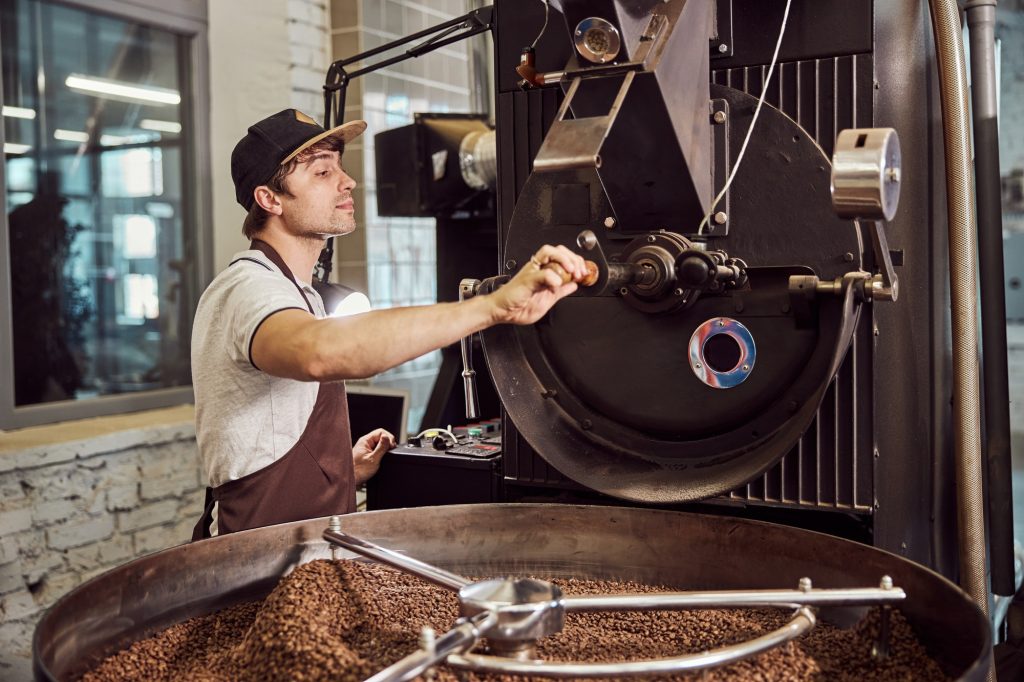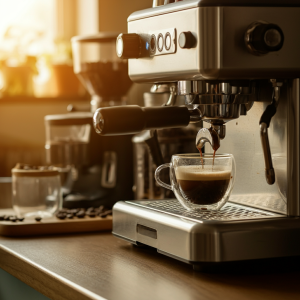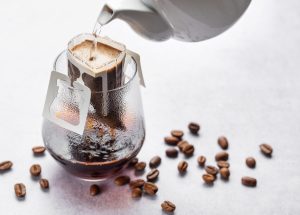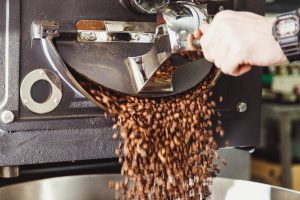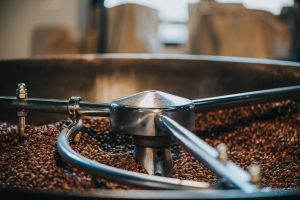
Coffee roasting is where the magic begins. It’s the process that transforms raw, green coffee beans into the aromatic, flavorful beans we brew every morning. But what goes into coffee roasting, and how does it affect the taste of your beloved brew? Whether you’re a coffee enthusiast, a home barista, or a café owner, understanding the basics of coffee roasting not only deepens your appreciation for coffee but also fine-tunes how you choose what ends up in your cup.
This guide explores the ins and outs of coffee roasting—from its history and process to the different roast levels and their impact on flavor. We’ll even share tips for roasting your own coffee at home!
A Quick Introduction to Coffee Roasting
Coffee roasting is an age-old craft that dates back to the 15th century. Some say it all started in the Arabian Peninsula, where coffee lovers would roast green beans over open flames before grinding and brewing them. Over time, roasting evolved into a sophisticated art, and today it plays an essential role in the global coffee industry.
Without roasting, coffee beans remain raw and lack the rich flavors and aromas we associate with our favorite coffee. Roasting doesn’t just make coffee consumable—it unlocks the unique chemical compounds within each bean, producing the diverse flavor profiles that coffee lovers enjoy.
The Basics of Coffee Roasting
What is Coffee Roasting?
Coffee roasting is the controlled application of heat to green coffee beans, triggering complex chemical reactions. These reactions include caramelization, Maillard reactions (which produce browning), and the breakdown of acids. Together, they create the flavor and aroma compounds that make great coffee so irresistible.
Understanding the Roasting Process
Roasting happens in three main phases:
- Drying Phase:
- Green beans need to lose their moisture content before roasting can begin in earnest. This phase typically lasts 4–8 minutes, depending on the roaster.
- Browning Phase:
- Here, the Maillard reaction starts to deepen the flavor. The beans turn light brown, and subtle aromas emerge. Roasters closely monitor this phase to control acidity and sweetness.
- Development Phase (First Crack):
- The coffee beans “crack” open, releasing steam. This audible “pop” signals the start of the development phase, where the roaster decides how light or dark the roast will go.
Key Factors in Roasting Profiles
Building a unique roasting profile means mastering variables such as time, temperature, and airflow. These variables determine how the beans will develop flavor nuances like acidity, sweetness, and bitterness.
- Time refers to how long the beans stay in the roaster.
- Temperature dictates the level of roast (light, medium, or dark).
- Airflow fans the flames of caramelization or chills down the process to halt over-roasting.
Different Types of Coffee Roasts
Coffee roasts are generally grouped into three categories: light, medium, and dark. Each roast level brings out distinct flavors and aromas, catering to different palates.
Light Roasts
- Appearance: Light brown, no oily surface
- Flavor Profile: Bright, acidic, fruity, and floral notes
- Examples: Cinnamon roast, New England roast
- Best For: Highlighting the bean’s origin flavors (terroir)
Medium Roasts
- Appearance: Medium brown, non-oily surface
- Flavor Profile: Balanced acidity and body, caramel-like sweetness
- Examples: American roast, City roast
- Best For: A crowd-pleaser offering complexity and richness
Dark Roasts
- Appearance: Dark brown to black, shiny and oily surface
- Flavor Profile: Bold, smoky, bitter-sweet notes with lower acidity
- Examples: French roast, Italian roast
- Best For: Fans of bold, rich coffees or espresso-based drinks
The Role of Roast in Coffee Flavor
How Does Roast Level Affect Taste?
Roast level significantly influences the taste, aroma, and mouthfeel of coffee:
- Light roasts preserve the bean’s natural flavors, offering subtle acidity and fruity notes.
- Medium roasts strike a harmonious balance between flavor, sweetness, and body.
- Dark roasts dominate with bold, caramelized tones, masking the bean’s original terroir.
Common Misconceptions About Roast and Flavor
- Myth: Dark roast coffee is stronger.
- Truth: Roast level doesn’t determine caffeine content. Light roasts often contain slightly more caffeine than dark roasts.
- Myth: Oily beans are fresher.
- Truth: Oily surfaces indicate darker roasts, not freshness.
Coffee Roasting at Home
Curious about roasting your own coffee? Home roasting is a fun way to craft coffee that matches your exact preferences. Here’s how to get started.
Tips for Home Roasting
- Choose Your Beans Wisely:
- Start with high-quality green beans. Look for beans from reputable origins like Ethiopia, Colombia, or Guatemala.
- Experiment with Small Batches:
- Practice with small quantities to understand how temperature and time affect flavor profiles.
- Monitor the Cracks:
- For light roasts, stop after the first crack. For darker roasts, continue into the second crack.
Equipment for Home Roasting
- Beginner-Friendly:
- Stove-top poppers or air popcorn makers can double as roasting tools.
- Advanced Options:
- Invest in dedicated home coffee roasters like the Behmor 2000AB or Fresh Roast SR540 for more control.
The Future of Coffee Roasting
As technology advances, the coffee roasting industry is evolving too. Here’s what’s brewing on the horizon:
Emerging Trends
- AI in Roasting:
- Smart roasting systems use AI to perfect roast profiles while minimizing human error.
- Precision and Customization:
- Micro-roasting is emerging as a trend, allowing for hyper-customized batches that cater to individual preferences.
Sustainability and Ethical Considerations
- Eco-friendly Practices:
- Roasters are increasingly adopting sustainable sourcing, solar-powered roasters, and carbon-neutral operations.
- Support for Farmers:
- Transparent supply chains and direct-trade relationships empower roasters to improve the livelihoods of coffee farmers.
Explore Coffee Roasting Like a Pro
Coffee roasting is both an art and a science, bridging tradition with innovation. Whether you’re a casual coffee drinker or a café owner, understanding the roasting process opens up a world of flavors and possibilities.
We encourage you to explore different roast levels, experiment with home roasting, or visit specialty roasters to deepen your appreciation for this craft. Coffee isn’t just a beverage—it’s a culture, a ritual, and a way of life.
By diving into the world of coffee roasting, you unlock a fascinating journey of aromas and tastes. Whether you’re eager to refine your skills or savor the craftsmanship that goes into every cup, there’s always more to explore in the coffee realm.
For those interested in hands-on experiences and eager to taste the results of expert roasts, we invite you to join us for a coffee cupping session. Embrace the art of coffee and enrich your palate like never before.

